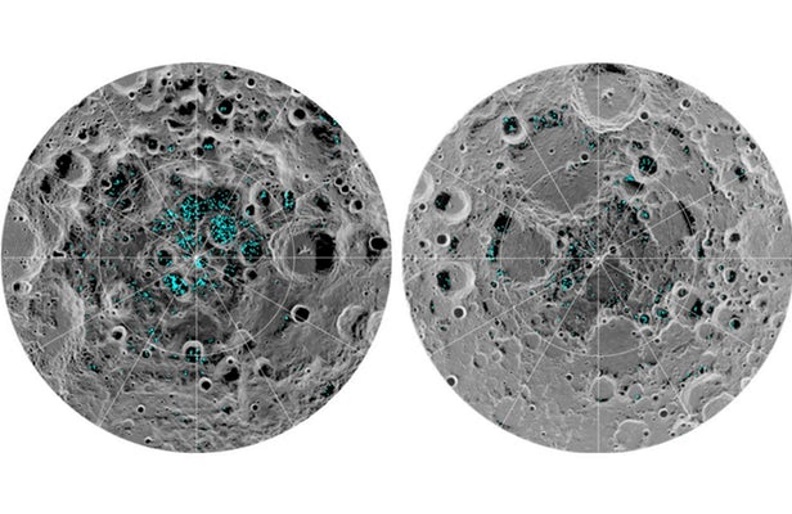In the darkest and coldest parts of its polar regions, a team of scientists has directly observed definitive evidence of water ice on the Moon’s surface. These ice deposits are patchily distributed and could possibly be ancient. At the southern pole, most of the ice is concentrated at lunar craters, while the north pole’s ice is more widely, but sparsely spread.
A team of scientists led by Shuai Li of the University of Hawaii and Brown University claims to have found definitive evidence of water ice at both north and south poles of the Moon. Using data from NASA’s Moon Mineralogy Mapper (M3) instrument aboard the Indian Space Research Organization (ISRO) Chandrayaan-1 lunar orbiter, the new discovery indicates that not only is water present on the Moon, but it is readily accessible from the surface.
If humanity is ever to be more than a visitor to the Moon, future explorers will have to quickly learn how to exploit the local lunar resources. Key to these is water. Not only is this most basic of human needs required for drinking, washing, and growing food, but it is also a vital source of oxygen for breathing and fuel to send rockets on deep space missions.
Though the presence of water on the Moon has been speculated on for over a century and evidence of its existence goes back to the Apollo missions of the 1970s, there hasn’t been much in the way of definitive proof of its presence. There were flashes of light from deep craters that might have been ice, but could also have been shiny rocks. There was also spectroscopic evidence that might have been water molecules, but could have been hydrates locked up in minerals. On top of that, if the water was present, it might have been sealed in deep strata miles under the lunar surface.
Now the M3 data shows that there are ice deposits at the north and south pole. The southern ice is concentrated in craters that are perpetually shadow-bound, while the northern ice is distributed widely, yet sparsely. This conclusion is based on three specific spectral signatures from light reflected off the deposits. These not only showed the presence of water, but also the infrared band determined that it is ice rather than water or vapor.
According to NASA, the water ice lies in the dark craters where the temperatures remain below -250⁰ F (-157⁰ C) and the Sun never shines to warm them. In addition, the readings indicate that the ice lies on the surface or within a few millimeters, so it is readily available for future mining.
More information: Shuai Li et al. Direct evidence of surface exposed water ice in the lunar polar regions, Proceedings of the National Academy of Sciences (2018). DOI: 10.1073/pnas.1802345115

